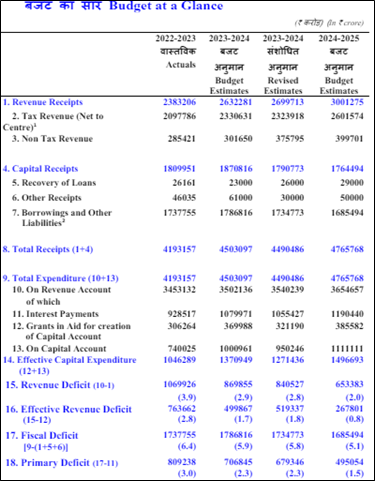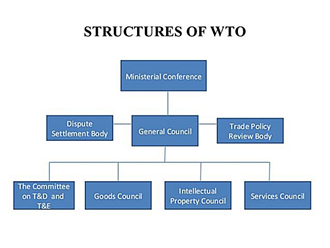-
- The budget deficit is an instrument of fiscal management.
- The different facets of the budget deficit indicate the different nature of fiscal imbalances.
- The annual budget indicates three types of deficits, viz. revenue, fiscal, and primary.
Note: The practice of showing Budget Deficit as one of the parameters were discontinued in 1997. Thus, whenever we say budget deficits, we must refer to fiscal deficit, revenue deficit or primary deficit.


1. Fiscal Deficit
-
- It indicates the total borrowing of the government planned in the budget. These borrowings can be done from the market or from foreign financial institutions. Till 1997, RBI also used to fund a portion of fiscal deficit through buying of government securities and printing currency in return for it (also known as monetising the deficit).
Fiscal Deficit = Budget Deficit + Total Borrowing of the Government
-
- It is one of the most important fiscal policy parameters.
- Higher fiscal deficit means higher interest payment obligation which reduces the space for capital expenditure. This creates a vicious cycle where fresh borrowings may be triggered to pay interest obligation of previous debt. This is one of the most important parameters which are gauged by global credit rating agencies as high fiscal deficit is most likely to increase debt-to-GDP ratio of the country which may push the country into lower GDP growth phase.
- It also leads to ‘crowding out effect’ in which large borrowing by the government from the market leads to lower fund availability for the private sector which increases the cost of capital for the private sector.
Measures to manage high fiscal deficit
-
- Reducing wasteful expenditure which are revenue in nature like rationalisation of subsidies.
- Increasing the tax base by formalising the economy as this will increase the revenue receipt of the Government.
- Increasing the sources of non-tax revenue through fair auctioning processes.
- Increasing capital receipt by way disinvestment of public sector enterprises and monetisation of assets like highways and other infrastructure.
2. Revenue Deficit
-
- It is the excess of revenue expenditure over revenue receipts.
Revenue Deficit = Revenue Receipts – Revenue Expenditure
-
- Higher Revenue Expenditure is not good for the economy as it leads to borrowing for consumption expenditure rather than capital formation.
- It is most likely lead to cuts in capital expenditure and social sector spending.
3. Effective Revenue Deficit
-
- There are various grants-in-aid provided to State Governments and other authorities through the Union Budget.
- Although a major portion of these grants are revenue in expenditure sense, but some of these grants are used by states to create capital assets like schools, hospitals etc.
- Thus, effective revenue deficit factors-in the portion of grant which is used for capital creation purposes so as to arrive at that amount of revenue deficits which is triggered by pure consumption-based expenditure.
Effective Revenue Deficit = Revenue Deficit – Grants for creation of capital assets
4. Primary Deficit
-
- It indicates the fresh borrowing for the current year.
- It is an indicator of borrowing requirement excluding the interest payment part.
Primary deficit = Fiscal deficit – Interest payment
-
- By comparing the fiscal deficit and primary deficit, one can find out the interest payments that the Government is paying on its past borrowings.



